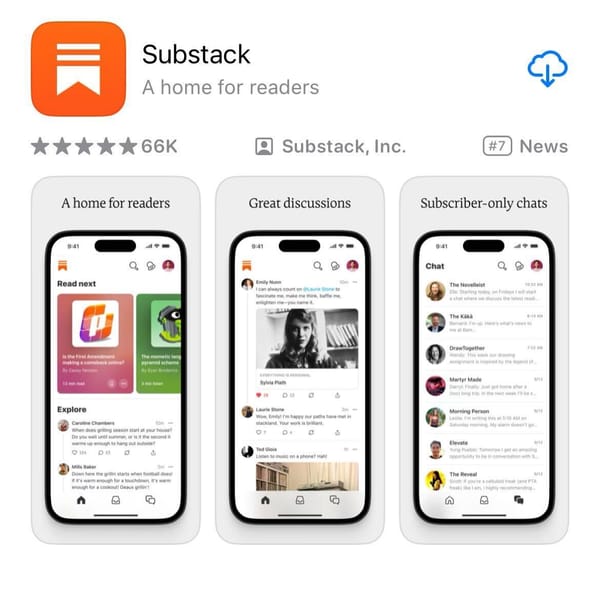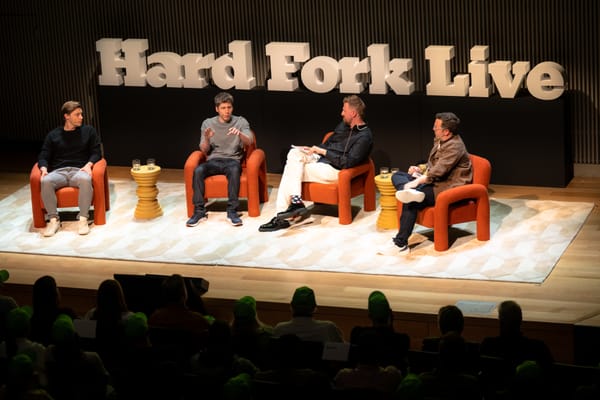Extremely Hardcore: Our New York magazine cover story
Twitter’s staff spent years trying to protect the platform against impulsive ranting billionaires — then one made himself the CEO

For the past several months, Platformer has covered every twist in the story of Elon Musk’s takeover of Twitter, from his first day on the job to his increasingly risky ideas to save the business. And for almost as long, we’ve hoped to be able to tell a fuller version of the story — one that conveyed the chaos that Musk unleashed in its totality, along with untold stories about the employees he chewed up and spat out along the way.
Today, along with our colleague Alex Heath at The Verge, we published our effort to do just that. “Extremely Hardcore,” our new cover story at New York magazine, attempts to capture what it has felt like for those inside — while raising the question of whether the fallout could take big chunks of Musk’s empire down with it.
We hope you’ll enjoy the story, which we excerpt below. Browse the version of the article posted to The Verge and you can watch Musk’s net worth fall as the chronology unfolds. And, of course, we’ll have plenty more to say on this subject in coming weeks as the company’s free fall continues.
On that subject: we’re told that Twitter revenue on Tuesday was down 40 percent year over year. And Musk’s first giant interest payment on the company is due at the end of the month.
Things are going to get worse before they get better.
On October 26, an engineer and mother of two — let’s call her Alicia — sat in a glass conference room in San Francisco trying to explain the details of Twitter’s tech stack to Elon Musk. He was supposed to officially buy the company in two days, and Alicia and a small group of trusted colleagues were tasked with outlining how its core infrastructure worked. But Musk, who was sitting two seats away from Alicia with his elbows propped on the table, looked sleepy. When he did talk, it was to ask questions about cost. How much does Twitter spend on data centers? Why was everything so expensive?
Alicia was already tired of Musk’s antics. For months, he had gone back and forth about buying the company where she had worked for more than a decade. He’d tried to back out of the deal, but Twitter sued, and the chief judge of Delaware’s Chancery Court said a trial would move forward if the acquisition wasn’t complete by October 28. Facing what many legal observers called an easy case for Twitter, Musk caved. So here they were, trying to show Musk what he was about to buy, and all he wanted to talk about was money.
Fine, she thought. If Musk wants to know about money, I’ll tell him. She launched into a technical explanation of the company’s data-center efficiency, curious to see if he would follow along. Instead, he interrupted. “I was writing C programs in the ’90s,” he said dismissively. “I understand how computers work.”
Alicia knew Twitter had problems; when prospective employees asked her why she’d stayed there so long, she would tell them, honestly, that the company was incredibly inefficient. It took a long time to get buy-in on projects, and communication across teams was generally poor. But it operated with a “benevolent anarchy” through which anyone could influence the direction of the product. “You didn’t need someone in a position of power to explicitly grant you permission,” Alicia says. “It was very much a bottom-up organization.”
Rumors were swirling that Musk planned to cut 75 percent of the company. People were audibly sobbing in the bathrooms.
Unlike some of her colleagues, Alicia wasn’t reflexively anti-Musk. She respected what he had done at his companies and felt hopeful that, as someone who thought of himself as an engineer, he would support her highly technical work. But Musk had a different interest that day. Twitter, he said, should immediately get into video.
“We really should be able to do longform video and attract the best content creators by giving them a better cut than YouTube,” he said, according to Alicia’s recollection. The infrastructure engineers in the room agreed that adding support for longform video was technically possible, but their job was building stuff — not strategy or marketing. It seemed as though Musk didn’t understand the basic organizational structure of a social-media company; it was as if a rich guy had bought a restaurant and started telling the cooks he wanted to add a new dining room. Might he want to speak with the media product team instead?
Just then, David Sacks, a venture capitalist and friend of Musk’s who had advised him on the acquisition, walked into the room. A fellow native of South Africa, Sacks had worked with Musk at PayPal and later led the enterprise social-networking company Yammer to a $1.2 billion sale to Microsoft.
“David, this meeting is too technical for you,” Musk said, waving his hand to dismiss Sacks. Wordlessly, Sacks turned and walked out, leaving the engineers — who had gotten little engagement from Musk on anything technical — slack-jawed. His imperiousness in the middle of a session he appeared to be botching was something to behold. (Musk did not respond to multiple requests for comment.)
Continue reading at The Verge.
Governing
- TikTok gave US lawmakers new details of its complex, $1.5 billion plan to reorganize the company’s US operations, including giving Oracle and other third-party monitors access to its recommendation algorithms. (Georgia Wells and Stu Woo / Wall Street Journal)
- Elon Musk’s first interest payment on the $13 billion of debt he used to fund the Twitter takeover is due at the end of January, leaving the CEO with unpalatable options including another costly sale of Tesla shares or declaring bankruptcy. (Tabby Kinder, Richard Waters and Eric Platt / Financial Times)
- A US District Judge said Twitter employees who were laid off can’t pursue their claims in a class action suit and have to go into private arbitration with the company instead. (Reuters)
- The Taliban started using Twitter’s Blue subscription to buy blue checkmarks — an outcome the company’s trust and safety team predicted months ago. (Abdirahim Saeed / BBC)
- Elon Musk’s cuts at Twitter have had an outsized effect on Japan, India, and Brazil, which already had fewer content moderators despite being among the company’s biggest markets. (Gerry Shih, Michael Miller and Joseph Menn / Washington Post)
- Elon Musk shut down a huge swathe of Twitter’s third-party apps, including Twitteriffic and Tweetbot, with no explanation. (Erin Woo / The Information)
- Government agencies rely on Twitter to share time-sensitive communications — but their dependence on the platform is becoming more tenuous under Elon Musk’s ownership. (Sarah Holder / Bloomberg)
- Celebrity photo agency Backgrid is suing Twitter for allegedly systematically failing to take down unauthorized copies of its pictures. (Adi Robertson / The Verge)
- Twitter blocked searches for a series of hashtags used to promote child sex abuse material following an NBC News investigation. (Ben Goggin / NBC)
- A 2016 promotional video of Tesla’s self-driving technology was staged, according to a senior engineer who testified as part of a lawsuit against the company for a fatal crash in 2018. (Hyunjoo Jin / Reuters)
- The January 6 committee found evidence that tech platforms — especially Twitter — failed to heed their own employees’ warnings about violent rhetoric that preceded the Capitol riot. But committee leaders didn’t include much of their findings in the final report for fear of angering Republicans and tech leaders. (Cat Zakrzewski, Cristiano Lima and Drew Harwell / Washington Post)
- The Justice Department cleared its top antitrust official to oversee cases involving Google despite the company asking that he recuse himself. (Miles Kruppa and Sam Schechner / Wall Street Journal)
- Getty Images is suing Stability AI, creators of popular AI art tool Stable Diffusion, over allegedly violating copyright law by using millions of Getty images to train its software. (James Vincent / The Verge)
- Apple is under increasing pressure to divest from China, where it makes more than 95 percent of its iPhones, AirPods, Macs and iPads, but the company has few viable paths to do so in the short term. (Patrick McGee / Financial Times)
- The Federal Elections Commission dismissed a Republican-led complaint that Google’s filters in Gmail unfairly send GOP fundraising emails to spam folders. Hopefully we can still have 10 hearings about it anyway. (Makena Kelly / The Verge)
- Google says a Supreme Court case challenging Section 230 on the grounds that it has been stretched to cover recommendation algorithms in a way lawmakers never intended could upend the internet as we know it. It’s probably right! (John D. McKinnon / Wall Street Journal)
- Auburn University banned students from accessing TikTok on campus WiFi, but students are finding ways to work around it. (Sapna Maheshwari / New York Times)
- Meta’s Oversight Board overturned the company’s takedown of two posts that depicted a non-binary and transgender person’s bare chests, saying the company’s nudity policy is convoluted and needs to be revised. (Devin Coldewey / TechCruch)
- Microsoft is likely to receive an antitrust warning from the European Union about its bid for Activision Blizzard. (Foo Yun Chee / Reuters)
- Wikipedia says it should be treated differently than the big social platforms in the UK’s Online Safety Bill and that a proposed change would limit freedom of expression. (Chris Vallance / BBC)
- The UK’s Online Safety will is also expected to reduce user numbers for the big social platforms, impacting advertising revenue on platforms like TikTok and Instagram. (Ian Johnston and Cristina Criddle / Financial Times)
- China lifted an 18-month ban on Didi registering new users as the government prepares to end its crackdown on big tech platforms. (Julie Zhu and Yingzhi Yang / Reuters)
- Also: Shares of Tencent have nearly doubled since October as China’s crackdown on big tech winds down. (Abhishek Vishnoi / Bloomberg)
- Alibaba has been paying academics to lobby Chinese authorities to relax regulations and rehabilitate its reputation after regulators hit the firm with a record fine for antitrust abuses in 2021. (Qianer Liu / Financial Times)
Industry
- Sandie Hawkins, the head of TikTok’s e-commerce business in the US, reports to a ByteDance executive rather than TikTok’s CEO — undercutting the company’s assertions that it operates independently from its Chinese owner. (Juro Osawa / The Information)
- Microsoft CEO Satya Nadella said the company will move quickly to commercialize tools like ChatGPT and incorporate them into the company’s products. (Sam Schechner / Wall Street Journal)
- Microsoft said it will soon add ChatGPT to its cloud-based Azure service. (Dina Bass / Bloomberg)
- ChatGPT is already reshaping university courses. (Kalley Huang / New York Times)
- ChatGPT is getting training updates from researchers, and now knows that Elon Musk is Twitter’s CEO, despite saying that its learning cutoff was in 2021. (Jenna Moon / Semafor)
- Almost all the major sports leagues and publishers plan to run content deals on Twitter as usual this year. (Sara Fischer / Axios)
- Hinge is rolling out a new subscription tier that could cost as much as $60 a month. A small price to pay for asking more people “how was your weekend?” every day in hopes of finding true love. (Michael Tobin / Bloomberg)
- Apple announced the next-generation 14-inch and 16-inch MacBook Pro models, with faster M2 Pro and M2 Max chips, up to 96GB of RAM, an upgraded HDMI 2.1 port with support for an 8K external display, and faster Wi-Fi 6E. (Joe Rossignol / MarRumors)
- YouTube is rethinking its new policy to demonetize a creator’s video if they swear within the first 15 seconds, following outrage from the creator community. Look, you try talking about video games without swearing. (Mitchell Clark and Jess Weatherbed / The Verge)
- Bitcoin’s price has risen 26 percent in January, breaking $20,000 again and putting it in on course for its best month since October 2021. (Medha Singh and Lisa Pauline Mattackal / Reuters)
- Scammers are gaming Amazon’s review system to sell fake 16 terabyte portable SSD drives for $100 or less. (Josh Hendrickson / reviewgeek)
- Discord acquired Gas, the app that allows teens to share compliments with each other anonymously. Can it do for Discord what TBH did for Facebook?? (Sarcasm.) (Tom Warren / The Verge)
Those good tweets
For more good tweets every day, follow Casey’s Instagram stories.
im more scared of someone coming up to me with a camera asking me questions for their tiktok than i am of being held at gun point
— michael (@FilledwithUrine) 9:22 PM ∙ Jan 15, 2023
(completely overwhelmed) will do!
— Matt Margolis (@ItsMattsLaw) 3:53 AM ∙ Jan 17, 2023
Me to the HR department: Thanks! Loved my time being employed here
— Charlie Clark (@CharC_SEO) 6:38 AM ∙ Jan 16, 2023
Me on Glassdoor:
rothko's calendar
— saint laurent del rey (@laurentdelrey) 6:53 PM ∙ Jan 16, 2023
Talk to us
Send us tips, comments, questions, and extremely hardcore workplace behavior: casey@platformer.news and zoe@platformer.news.






